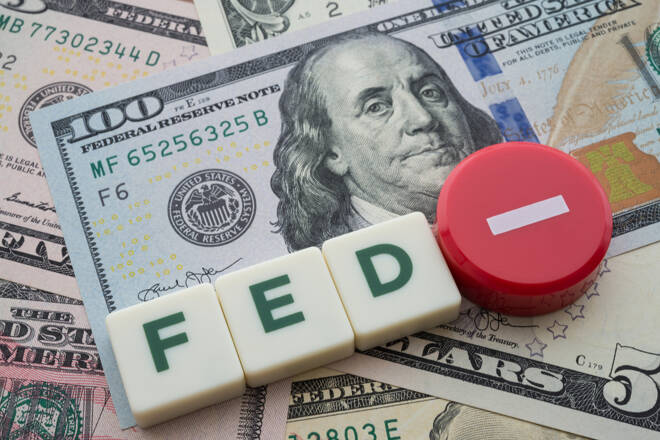Advertisement
Advertisement
Markets Boost Fed Tightening Bets Amid Hot Core US Inflation
By:
Hotter than expected core inflation means a 75 bps rate hike from the Fed next week is all but certain.
Key Points
- Headline US inflation unexpectedly rose 0.1% MoM in August, while the YoY rate ebbed to 8.3%.
- Core inflation jumped to 0.6% MoM and 6.3% YoY, above expectations amid strength in rents, utilities and new car prices.
- Markets have responded by adding an additional 25 bps in expected Fed rate hikes between now and mid-2023.
Core Inflation Comes in Hot
US Consumer Price Index figures for August surprised to the upside on Tuesday. The headline price index rose 0.1% MoM last month versus an expected 0.1% drop, after remaining unchanged in July. YoY, the headline price index fell to 8.3% from 8.5% a month earlier, less than the expected decline to 8.5%.
The real surprise came in the core inflation figures. The rate of core inflation jumped to 0.6% MoM in August against expectations that it would remain unchanged at 0.3%, while the YoY core inflation rate rose to 6.3% from 5.9% versus and expected rise to 6.1%.
The surge in core inflation was driven primarily by upside in rental costs, which were up 0.7% on the month, in utility costs, which surged 1.5% and in new car prices, which gained 0.8%. Food prices, meanwhile, were up 0.8% MoM. Strength in these components thus largely outweighed weakness in gasoline prices, which were down a little over 10% MoM in August.
“The slow-moving nature of primary rent and OER in the CPI data suggest housing will continue to provide a sizable boost to core inflation in the coming months,” analysts at Well Fargo note. “At the same time, price growth for other services like medical care, insurance, tuition and personal care continue to press ahead at a strong rate, underscoring the inertia inflation continues to carry,” they add.
Markets Up Fed Tightening Bets
In response to the much hotter than expected core US inflation figures for August, markets have responded by significantly upping their Fed tightening bets for the coming quarters. Where Fed funds futures markets had been priced for benchmark US interest rates to have ended the year slightly below 3.8% prior to Tuesday’s data, they are now priced for rates to end the year roughly 25 bps higher in the 4.0% area.
Meanwhile, where Fed funds futures markets had been positioned for the benchmark rates to peak somewhere around 4.0% next year, rates are now seen hitting around 4.25% by the end of Q1.
In terms of upcoming Fed meetings, according to the CME’s FedWatch tool, where US money market pricing had implied a 91% chance of a 75 bps rate hike and a slim 9.0% chance of a smaller 50 bps rate hike at next week’s FOMC meeting, a hike of at least 75 bps is now seen as certain, while the chances of an even larger 100 bps rate hike is priced at about 18%.
Most analysts are sticking by their calls for the Fed to press ahead with a 75 bps rate hike next week, regardless of the latest CPI figures. However, many are now calling for another 75 bps rate hike at the November meeting, with money markets also implying that this is now the base case scenario.
According to the CME’s Fed Watch Tool, there is now a 51.4% chance that the Fed will have raised interest rates to the 3.75-4.0% range (150 bps above current 2.25-2.5% levels) by the November meeting, versus just a 14.1% probability priced one day ago.
The latest inflation figures will be alarming to the Fed, who had already been flagging concern about the prospect that core price pressures remain elevated. Hence, the market reaction likely makes sense – if core inflation is stickier that previously thought, then the Fed will likely respond with additional tightening.
In terms of the market reaction; US equities have unsurprisingly been hammered as valuations take a hit amid the higher rate outlook, while crypto has also been hit. The US dollar has rallied, as have US yields across the curve, while gold has been hit.
About the Author
Joel Frankauthor
Joel Frank is an economics graduate from the University of Birmingham and has worked as a full-time financial market analyst since 2018. Joel specialises in the coverage of FX, equity, bond, commodity and crypto markets from both a fundamental and technical perspective.
Advertisement
